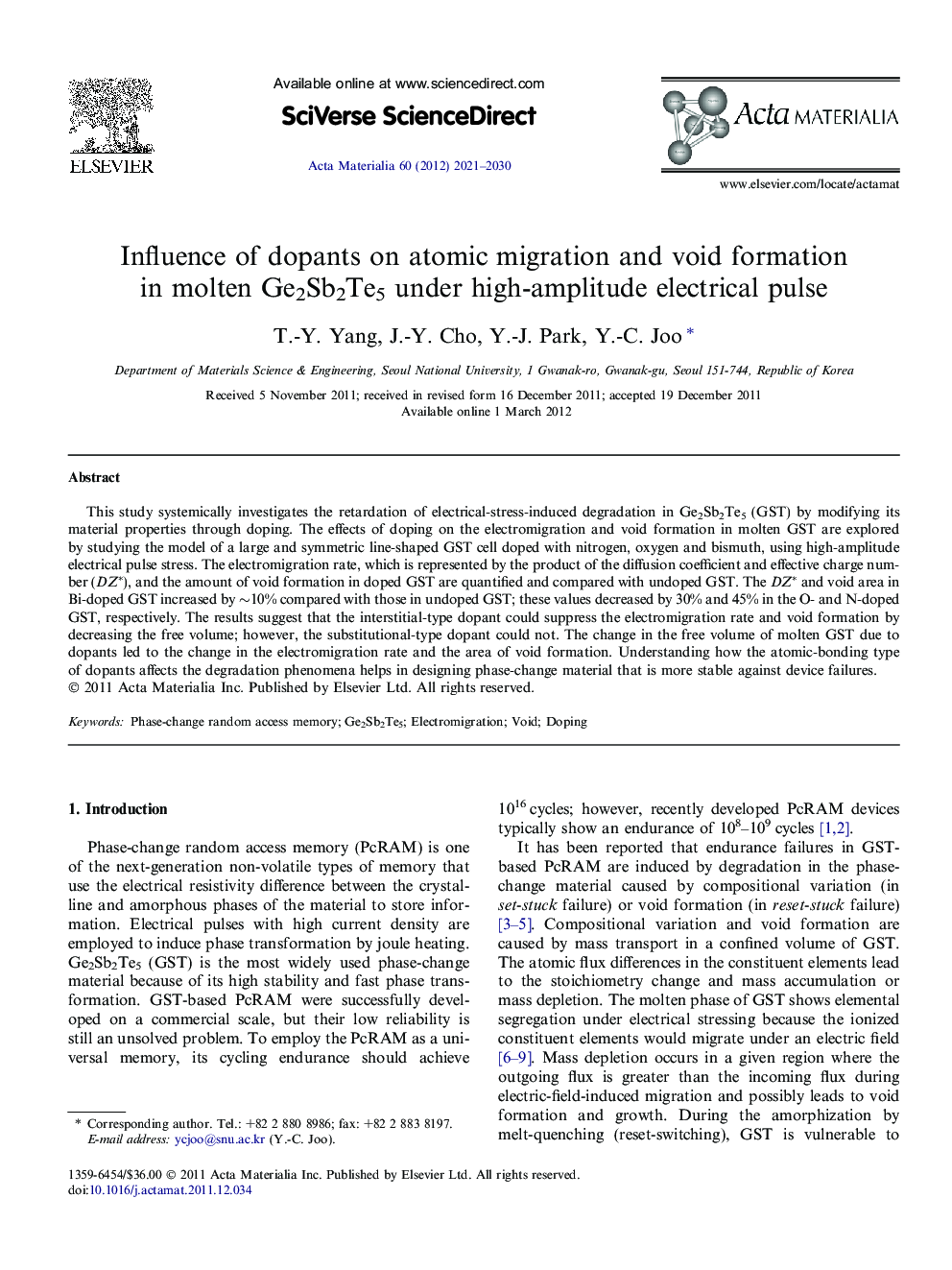| Article ID | Journal | Published Year | Pages | File Type |
|---|---|---|---|---|
| 10620449 | Acta Materialia | 2012 | 10 Pages |
Abstract
This study systemically investigates the retardation of electrical-stress-induced degradation in Ge2Sb2Te5 (GST) by modifying its material properties through doping. The effects of doping on the electromigration and void formation in molten GST are explored by studying the model of a large and symmetric line-shaped GST cell doped with nitrogen, oxygen and bismuth, using high-amplitude electrical pulse stress. The electromigration rate, which is represented by the product of the diffusion coefficient and effective charge number (DZ*), and the amount of void formation in doped GST are quantified and compared with undoped GST. The DZ* and void area in Bi-doped GST increased by â¼10% compared with those in undoped GST; these values decreased by 30% and 45% in the O- and N-doped GST, respectively. The results suggest that the interstitial-type dopant could suppress the electromigration rate and void formation by decreasing the free volume; however, the substitutional-type dopant could not. The change in the free volume of molten GST due to dopants led to the change in the electromigration rate and the area of void formation. Understanding how the atomic-bonding type of dopants affects the degradation phenomena helps in designing phase-change material that is more stable against device failures.
Related Topics
Physical Sciences and Engineering
Materials Science
Ceramics and Composites
Authors
T.-Y. Yang, J.-Y. Cho, Y.-J. Park, Y.-C. Joo,
